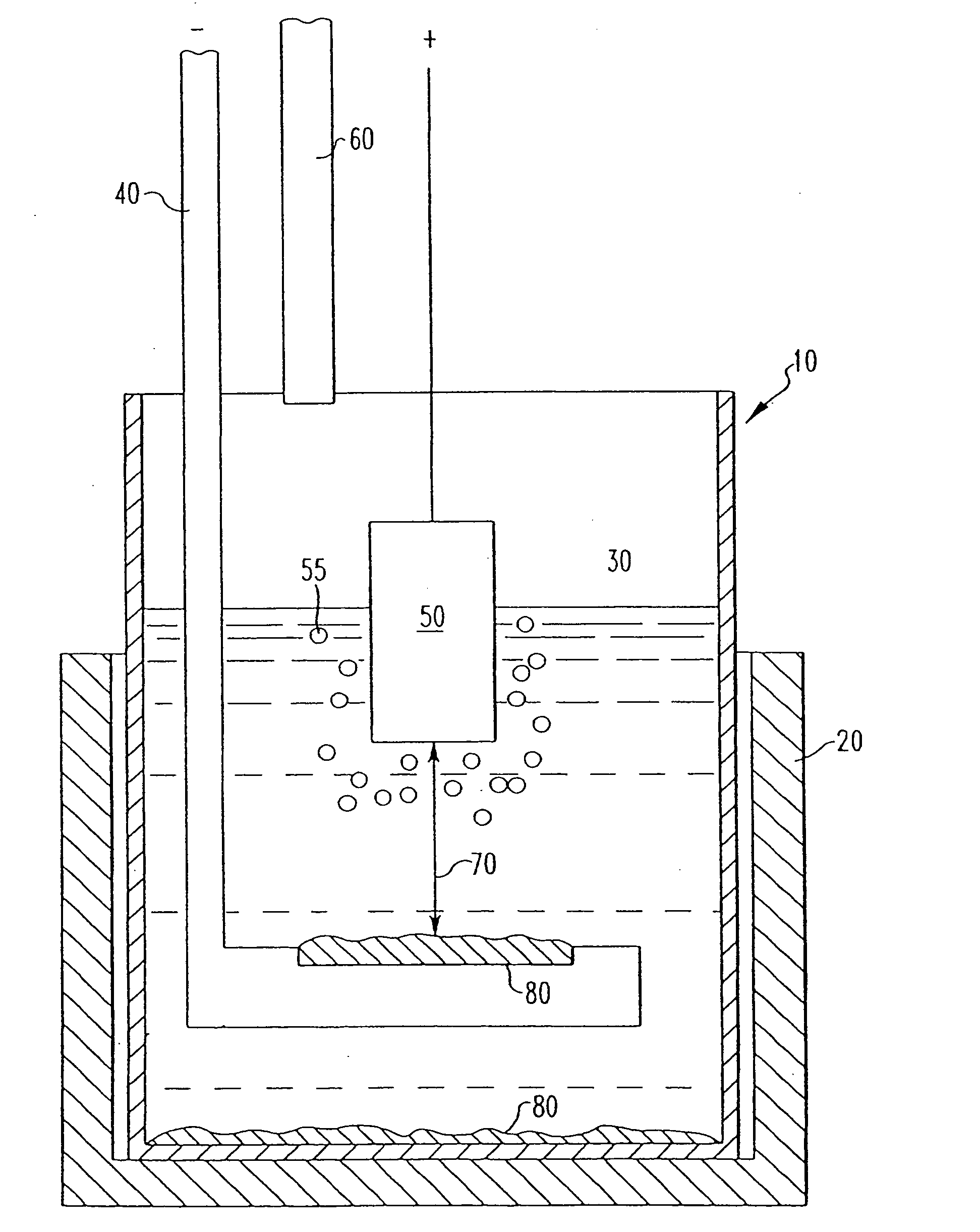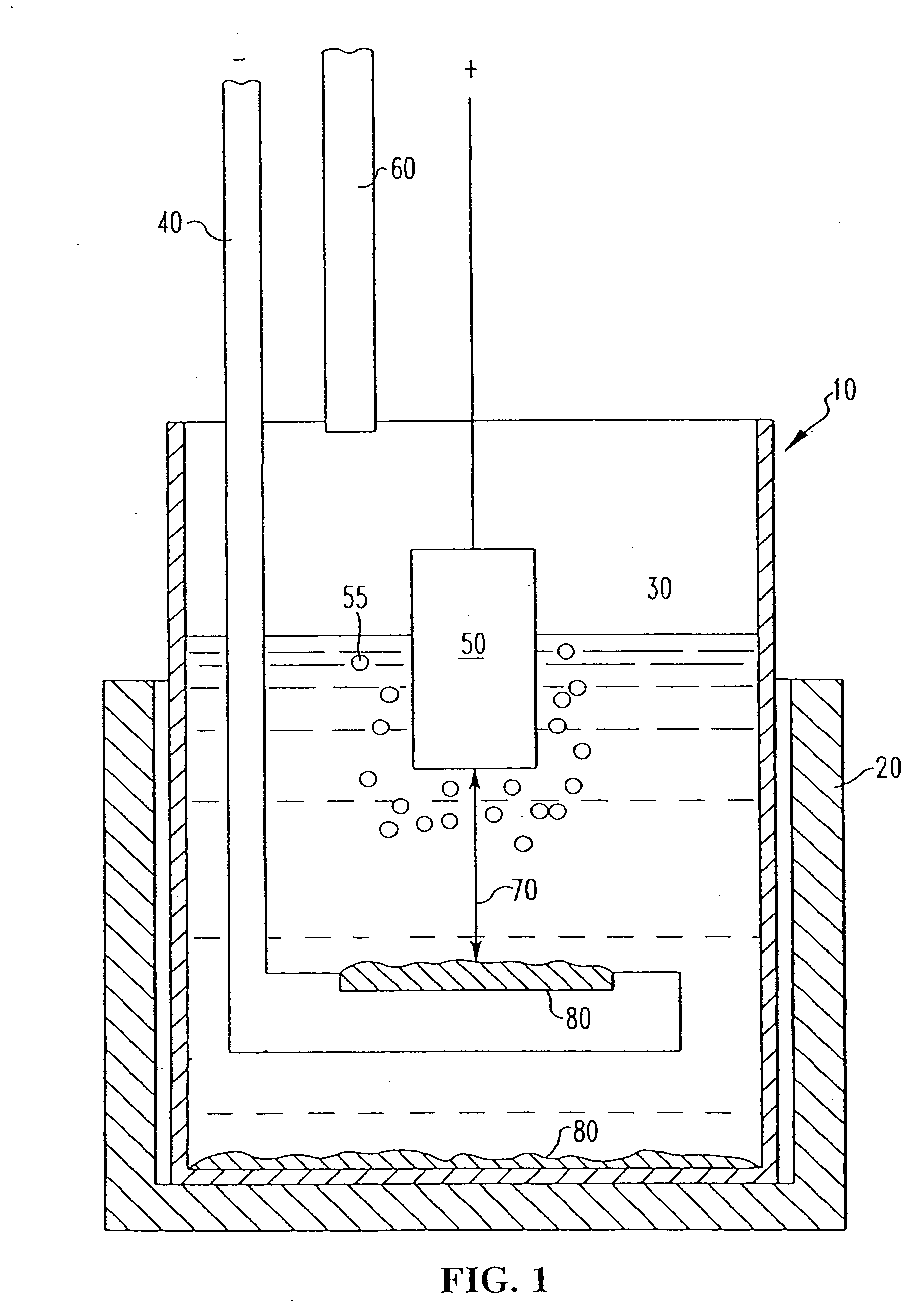Stable anodes including iron oxide and use of such anodes in metal production cells
- Summary
- Abstract
- Description
- Claims
- Application Information
AI Technical Summary
Benefits of technology
Problems solved by technology
Method used
Image
Examples
example 1
[0023] In the press sintering process, the iron oxide mixture may be ground, for example, in a ball mill to an average particle size of less than 10 microns. The fine iron oxide particles may be blended with a polymeric binder / plasticizer and water to make a slurry. About 0.1-0 parts by weight of an organic polymeric binder may be added to 100 parts by weight of the iron oxide particles. Some suitable binders include polyvinyl alcohol, acrylic polymers, polyglycols, polyvinyl acetate, polyisobutylene, polycarbonates, polystyrene, polyacrylates, and mixtures and copolymers thereof. Preferably, about 0.8-3 parts by weight of the binder are added to 100 parts by weight of the iron oxide. The mixture of iron oxide and binder may optionally be spray dried by forming a slurry containing, e.g., about 60 weight percent solids and about 40 weight percent water. Spray drying of the slurry may produce dry agglomerates of the iron oxide and binders. The iron oxide and binder mixture may be pres...
example 2
[0024] In the fuse casting process, anodes may be made by melting iron oxide raw materials such as ores in accordance with standard fuse casting techniques, and then pouring the melted material into fixed molds. Heat is extracted from the molds, resulting in a solid anode shape.
example 3
[0025] In the castable process, the anodes may be produced from iron oxide aggregate or powder mixed with bonding agents. The bonding agent may comprise, e.g., a 3 weight percent addition of activated alumina. Other organic and inorganic bonding phases may be used, such as cements or combinations of other rehydratable inorganics and as well as organic binders. Water and organic dispersants may be added to the dry mix to obtain a mixture with flow properties characteristic of vibratable refractory castables. The material is then added to molds and vibrated to compact the mixture. The mixtures are allowed to cure at room temperature to solidify the part. Alternately, the mold and mixture may be heated to elevated temperatures of 60-95° C. to further accelerate the curing process. Once cured, the cast material is removed from the mold and sintered in a similar manner as described in Example 1.
[0026] Iron oxide anodes were prepared comprising Fe3O4, Fe2O3, FeO or combinations thereof i...
PUM
| Property | Measurement | Unit |
|---|---|---|
| Temperature | aaaaa | aaaaa |
| Temperature | aaaaa | aaaaa |
| Percent by mass | aaaaa | aaaaa |
Abstract
Description
Claims
Application Information
 Login to View More
Login to View More - R&D Engineer
- R&D Manager
- IP Professional
- Industry Leading Data Capabilities
- Powerful AI technology
- Patent DNA Extraction
Browse by: Latest US Patents, China's latest patents, Technical Efficacy Thesaurus, Application Domain, Technology Topic, Popular Technical Reports.
© 2024 PatSnap. All rights reserved.Legal|Privacy policy|Modern Slavery Act Transparency Statement|Sitemap|About US| Contact US: help@patsnap.com









